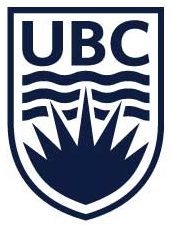Different digital content types require different reviews
The checklists below, organized by the content type, cover the basics for making digital content accessible. Implementing these suggestions in your course will improve access for students with vision/hearing impairments and other learning barriers.
1) Check your text
Follow these guidelines whenever you are working with digital text, including content that is directly put online and content that is uploaded in documents or slides.
Accessible Text
 UBC Best Practices
UBC Best Practices
- Create contrast – Choose text colours with high colour contrast against the background colour. Higher contrast increases visibility and readability.
- Split into sections – Organize text into clear sections and sub-sections. Good organization makes it easier to understand and navigate the content.
- Designate headings – Label each section or sub-section with concise, descriptive text and designate the text as a heading using the application or text editor. Headings allow students using screen readers to correctly read and navigate content.
- Add heading hierarchy – Choose an appropriate heading level for each heading using the application or text editor that you are in. The levels should create a logical flow as you move through the text.
- Write descriptive links – When including links, use hyperlink text that explains the destination of each link, rather than only a web address or non-descriptive text such as “Click here”. Descriptive links help orient students—especially those using screen readers— without requiring them to click the link first.
- Use readable, tagged PDFs – PDF files should have readable text (i.e., uses OCR if it scanned) and has been tagged. Using the PDF format will ensure that students can open the file, and tags in the PDF will let students using screen readers read the content.
2) Check your visuals
Follow these guidelines when working with digital visuals—such as images, icons, and graphs—whether you’re posting content online or uploading it into documents or slides.
Accessible Visuals
 UBC Best Practices
UBC Best Practices
- Categorize visuals – Determine which visuals convey essential course content and which are purely decorative and could be removed without affecting comprehension. This categorization guides the appropriate accessibility measures needed for each visual.
- Describe key visuals – For visuals that convey key course content, add alternative text to describe the visual’s content and purpose. This text will be read in place of the visual by students using screen readers. You can leave out phrases like “image of”, as screen readers will automatically note when they reach an image.
- Designate decorative visuals – For visuals that are decorative, do not add alternative text; instead, specifically designate each visual as decorative in the application or text editor where you are including it. A decorative designation lets the visual be ignored by students using screen readers.
- Communicate beyond colour – When using a visual like a bar chart to convey meaning, differentiate the data with a non-colour indicator like a background pattern, shape, or text label. Using non-colour indicators in place of—or in addition to—colour indicators allows students with colour blindness to correctly interpret the information.
3) Check your tables
Follow these guidelines whenever you are working with digital tables, including content that is in spreadsheets.
Accessible Tables
 UBC Best Practices
UBC Best Practices
- Insert true tables – Use the built-in tools to add tables in the application or text editor. Do not use images of tables, or drawings of tables, as they will not allow students using screen readers to properly read them.
- Include table captions – A table caption allows you to summarize its content. Table captions are shown to everyone but are particularly helpful for students using screen readers, as the caption will be read to them first, to contextualize the data.
- Designate table headers – Label the beginning of each row and/or column with text that describes the content in the rows or columns that follow and designate the text as headers using the application or text editor. Proper headers allow students using screen readers to correctly read the table.
- Keep it simple – If possible, limit tables to one row header and/or one column header. Avoid merging or splitting any cells and avoid using nested tables. Additional headers, merged/split cells, and nested tables make it difficult for students using screen readers to correctly read the table.
- Fill every cell – Ensure that all cells in the table have data in them—even if that content only indicates a lack of data—and avoid using blank rows or columns for spacing or style. Screen readers read every cell, and blanks can create confusion.
- Create contrast – Choose text colours with high colour contrast against the cell background. Higher contrast increases visibility and readability.
4) Check your multimedia
Follow these guidelines when working with video and audio.
Accessible Multimedia
 UBC Best Practices
UBC Best Practices
- Enable closed captioning – When including streaming or recorded video in a course, allow students to turn closed captioning on and off. Closed captioning lets students read verbal content as it is being shared.
- Provide a transcript – When including video or audio content in a course, create and share a transcript of the verbal content. The transcript can be posted alongside recorded multimedia, or it can be uploaded after a live streaming event.